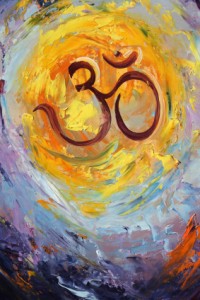 Hinduism is the third largest religion in the world, following Christianity and Islam. It encompasses a very wide diversity of belief systems. Different branches of Hinduism have different takes on divinity, monotheism, worship, and rites. Hindus are generally concerned with the prominent themes of spirituality: Samsara (the cycle of life, death, and rebirth), Karma (the consequences of action), Dharma (ethics), Moksha (spiritual liberation), and Yogas (practices). Hinduism’s religious leaders are as varied as the religion’s history and practices.
Hinduism is the third largest religion in the world, following Christianity and Islam. It encompasses a very wide diversity of belief systems. Different branches of Hinduism have different takes on divinity, monotheism, worship, and rites. Hindus are generally concerned with the prominent themes of spirituality: Samsara (the cycle of life, death, and rebirth), Karma (the consequences of action), Dharma (ethics), Moksha (spiritual liberation), and Yogas (practices). Hinduism’s religious leaders are as varied as the religion’s history and practices.
What is a pujari?
A pujari is a temple priest who performs the puja, meaning “adoration” or worship, which can last from as little as ten minutes to as long as ten hours. Most are addressed as pandit to pay tribute to their extensive education. A pujari is a highly learned person who knows the Sanskrit language and hundreds of mantras, chants, and rituals. For many Hindu temples, the puja is a very intricate ceremony that involves very specific rituals for cleansings, offerings, and blessings. These rites often require mantras and special hand gestures.
The pujari is also person who is considered to be very spiritually pure and blessed in a special way. The pujari is mostly concerned with maintaining a high level of spirituality and sanctity in the temple and may devote much of his time to meditation and personal worship. Because Hindu beliefs vary from atheistic perspectives to henotheism (the worship of one God with acknowledgement that others exist), pujaris particular rituals and roles are specific to their temple and community. Some temples have only one pujari, while others have a team of priests to conduct specific rituals, such as maintaining a shrine. Like ministers of the Universal Life Church, pujaris often conduct life stage rituals, such as weddings and funerals.
How do I get ordained as a pujari?
For many Hindu temples, there are very specific and stringent restrictions on who can become a pujari. In India, one of the biggest Hindu countries, pujaris are historically from a certain social and lineated caste called the Brahmins. There are four castes in this tradition, with Brahmins being the highest, “priest” caste. Today, the caste system is quickly changing and adapting to modern perspectives on self-determination and spiritual purity, so some temples are expanding beyond the Brahmin class. Likewise, pujaris in most traditions are men, but some newer traditions are embracing women, as the ULC does.
Pujaris are generally trained from childhood by their parents or community leaders to become spiritual leaders. They learn the rituals, chants, and mantras. They study scripture at great length. They may study and worship at a temple, where they learn more about conducting rites and personal spirituality. The process by which they get ordained varies from tradition to tradition. Some pujaris get “ordained” in large, intricate ceremonies, others in quick, intimate ceremonies with only one other pujari, and others receive no rite to become ordained and simply begin leading worship. A common sentiment in Hinduism is that it takes a person of very high spirituality to perform worship for oneself as well as perform worship for others.

